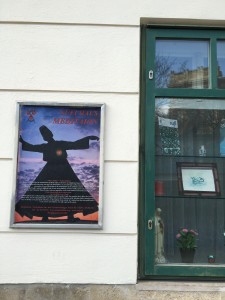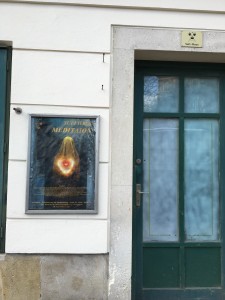Sufi-Haus
Week 7: Muslim Devotion in Local Contexts
As the largest religion in the world, Islam is practiced by people of different socioeconomic, cultural, and historical backgrounds. As such, many variations of devotional practice have arisen. In week 7 we discussed the expression of Muslim devotion in local contexts through the South Asian ginans, the qasidah modern in Indonesia, and the practice of Sufism in Sengal through Aminata Sow Fall’s short story. To my surprise, while walking to the naschtmarkt in Vienna, Austria over spring break I came upon a “Sufi- Haus” or Sufi place of devotional worship. The space looked nothing like the tent of Serigne Birama – the revered marabout in Beggar’s Strike, nor anything like the outdoor spaces of religious practice featured in the documentary on Islamic conversions in Africa that we watched in class.


From the outside it looked just like any other house: the light white curtains were drawn and there was a potted plant and some decorative items on the windowsill. There was even a small ceramic figurine of what appeared to be the Virgin Mary – misleading at best. The only signs of Islamic worship were the posters on the wall describing Sufism (in English!). Here is their description;


These photographs capture a variation of Sufi devotional practice and a religious space adapted to a “Western” culture like that of Austria. The Sufi-Haus, rather than promoting itself as a place where Sufi Muslims go to engage in dikhr and rituals such as chants and dancing, advertised itself as a place for meditation done by appointment.